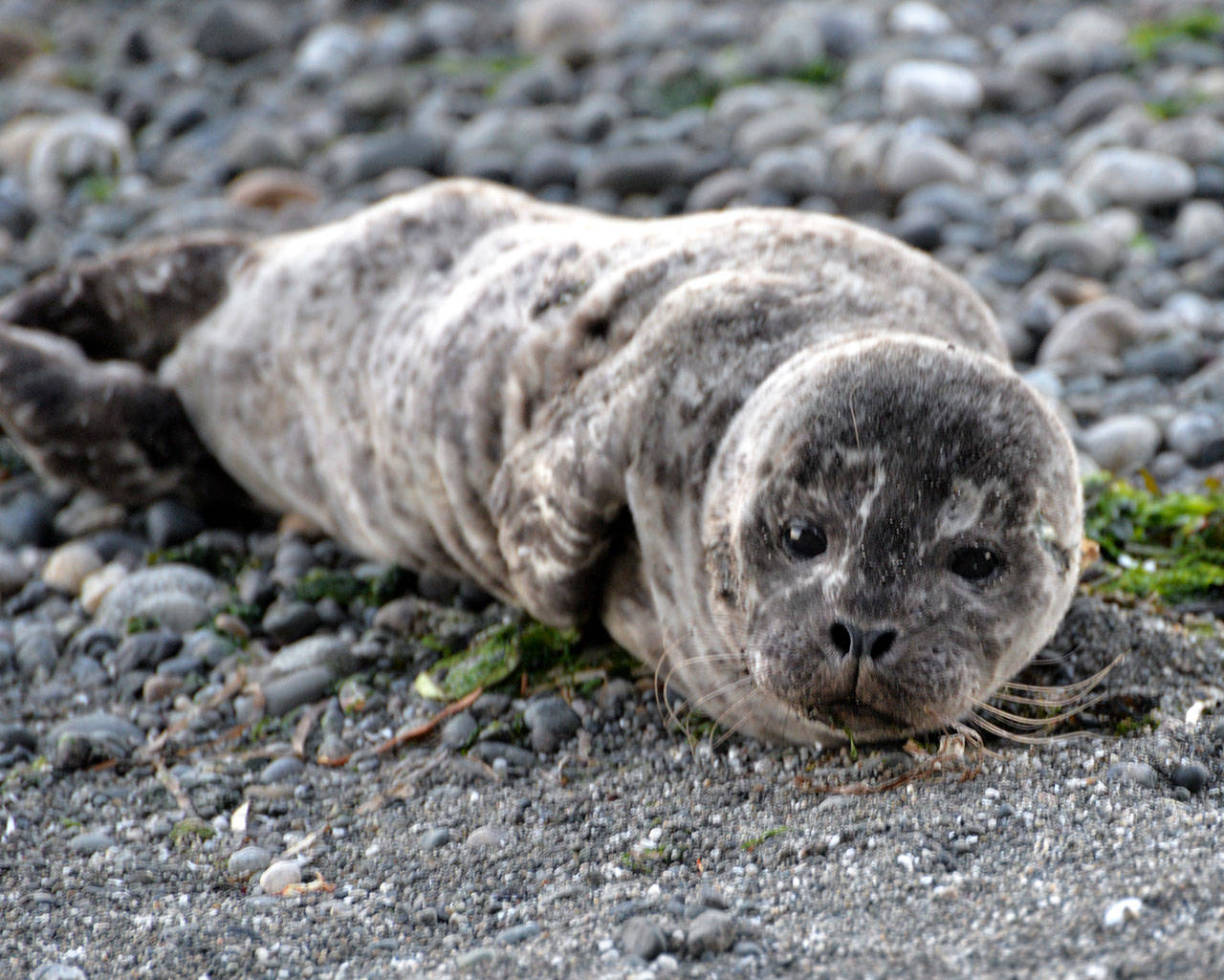A harbor seal pup was spotted at KVI last week, raising several islanders’ concerns that it might be harmed by a loose dog.
Ann Stateler, a responder with the West Coast Marine Mammal Stranding Network, reminded islanders that most lone seal pups on shore are not abandoned or ill. It is normal for the mothers to leave their pups alone, sometimes for hours, while they hunt for food.
“People see the pups and think they look helpless and adorable, but they are not,” Stateler said.
The pupping season began in July and will continue into the beginning of September.
Stateler encourages people who spot a seal pup to stay far away — 100 yards back from a pup on shore. People and dogs hovering near a seal pup can prevent the mother from returning to nurse and bond with her baby, Stateler said.
“We want the mothers to be reunited with their pups. We do not want them to end up in a rehabilitation center, which compromises their chances of surviving in the wild,” she said.
Stateler added that pups can sleep anywhere; beaches, rafts, boat ramps, stairs, and bulkheads.
In fact, she said, one island man near the Dolphin Point neighborhood recently called her to report that a mother seal had given birth in his boat; it was nine days before mother and baby moved out.
“That was a new one,” she said. “I have not gotten a call like that before.”
Last week’s pup at KVI likely reunited with its mother and moved on, Stateler said, as the person who reported it did not call back the next day, as Stateler said she told the person to do if it was still there.
She added that harassing marine mammals is a violation of the Marine Mammal Protection Act. Harassment or disturbance occurs when people impede a marine mammal’s ability to hunt, feed, rest, breed, communicate, socialize or care for their young.
Also, she said, seals that are frightened may bite and can transmit diseases to both dogs and people.
Stateler noted that she and Odin Lonning are the only two authorized marine mammal stranding responders on Vashon. They have worked with the stranding network since 2007. Island response to stranded animals occurs in collaboration with NOAA fisheries, Washington Department of Fish and Wildlife, Cascadia Research Collective and others.
If members of the public spot a marine mammal they are concerned about, Stateler encourages them to call 206-463-9041 or the stranding answering service at 866-767-6114. Emailing a photo to Vashonorcas@aol.com is helpful as well. Stateler and Lonning also have signs they can post alerting the public to the presence of an animal, she said.
In addition to serving as marine mammal coordinators, Stateler and Lonning have a history of working with whales through their Vashon Hydrophone Project.
Last Friday, she said, nine transients from two family groups were in Colvos Pass, drawing about 30 boats, including research and recreational vessels and one whale watching boat. Photos she took from the day show a recreational boat nearly on top of one of the orcas and the tour boat close in as well.
From the whales’ active behavior, she said it was clear they had just made a kill. In fact, she said, about 30 harbor seals were close into the shore, with pups climbing on their mothers’ backs.
“The seals were aware that one of their brethren had been taken out,” she said.
After a short time in the pass, the whales headed off to the Tacoma Narrows, moving fast, she said, presumably taking advantage of the flood tide.



